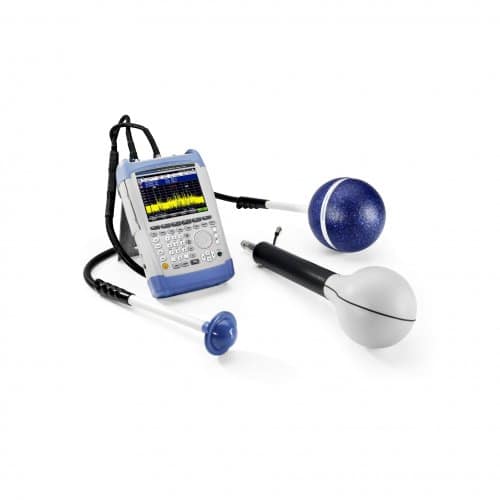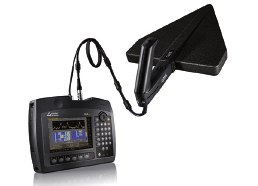New antenna that extends the scope of application of the IDA-3106 Interference and Direction Analyzer up to 9 kHz
Through a new antenna, suitable for very low frequencies, Narda Safety Test Solutions has extended the scope of its well-known Interference and Direction Analyzer. The antenna is ideal for detecting interference from switching power supplies or data transmission systems over power lines.
The new loop antenna for the IDA-3106 Interference and Direction Analyzer covers a wide frequency range, from 9 kHz to 30 MHz. The antenna factor is 47.5 dB(1/m) at 1 MHz, which implies a very high sensitivity, a characteristic that makes the antenna particularly suitable both for analyzing the effects of poorly shielded switching power supplies or electrical controls that generate interfering fields, as well as for identifying interferences caused by data transmissions through the electrical network (PLC) or to demonstrate interference with other signals in the very low frequency (VLF) range, using, for example, the time signal from station DCF77.
Along with the new antenna, Narda also provides an improved grip, with an integrated preamplifier that covers the extended frequency range and increases sensitivity by 20 dB if necessary.
Thanks to the new antennas, the IDA-3106 Direction and Interference Analyzer now covers the entire frequency range, from 9 kHz to 6 GHz without interruption.
About the IDA-3106
The IDA-3106 Interference and Direction Analyzer has been specially designed to identify and locate sources of electromagnetic signals, especially in telecommunication and security applications. In communications, the goal is to find and eliminate interference, wherever it comes from.
In security applications, the equipment makes it possible to locate unknown sources and identify potential dangers. The IDA automatically determines the source direction, using a horizontal sweep, and displays the relative angle on a polar diagram.
By making various measurements, it can automatically calculate and display the exact position of the interferer. If an electronic map is installed, for example, it shows where the radiation is coming from on the map, just as you would see on a navigation system. The IDA provides an editable site plan, making it easy to locate the interferer located inside a building, for example, in a conference room. The determination of the position of the interferer is based on the GPS receiver of the measuring instrument. measurement and electronic compass built into the antenna grip, which determines direction, elevation, and polarization. Optimized antennas for different frequency ranges are available that can be inserted, horizontally or vertically, into the ergonomic handle. The basic unit IDA-3106 is a small and light equipment, ideal for works in situ, it weighs less than 3 kg, including the battery. The antenna and grip, which are powered through the basic unit, weigh less than 1 kg.
The rechargeable battery can be changed anywhere, without interrupting operations. For more information about the IDA visit the website: www.narda-sts.de





